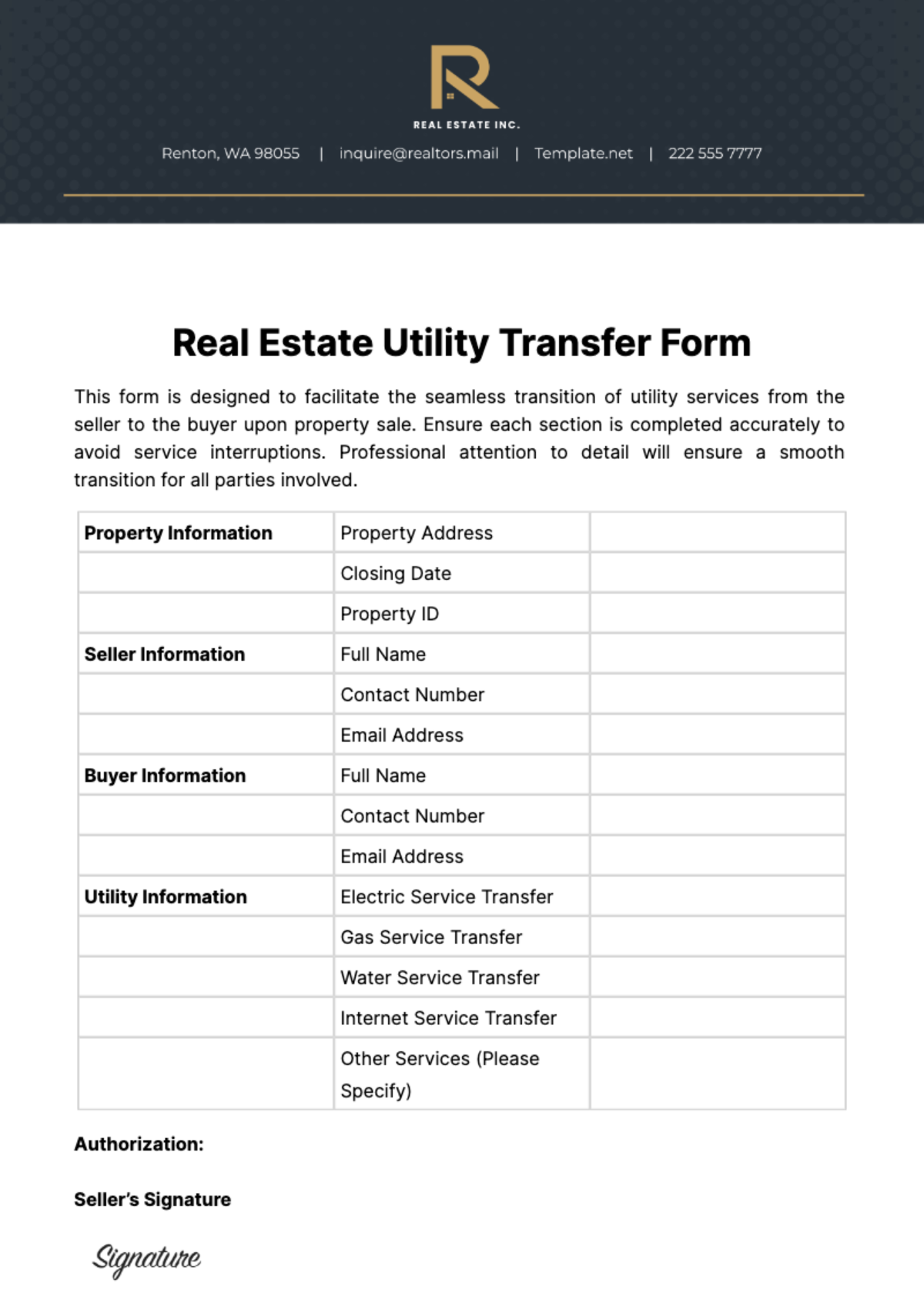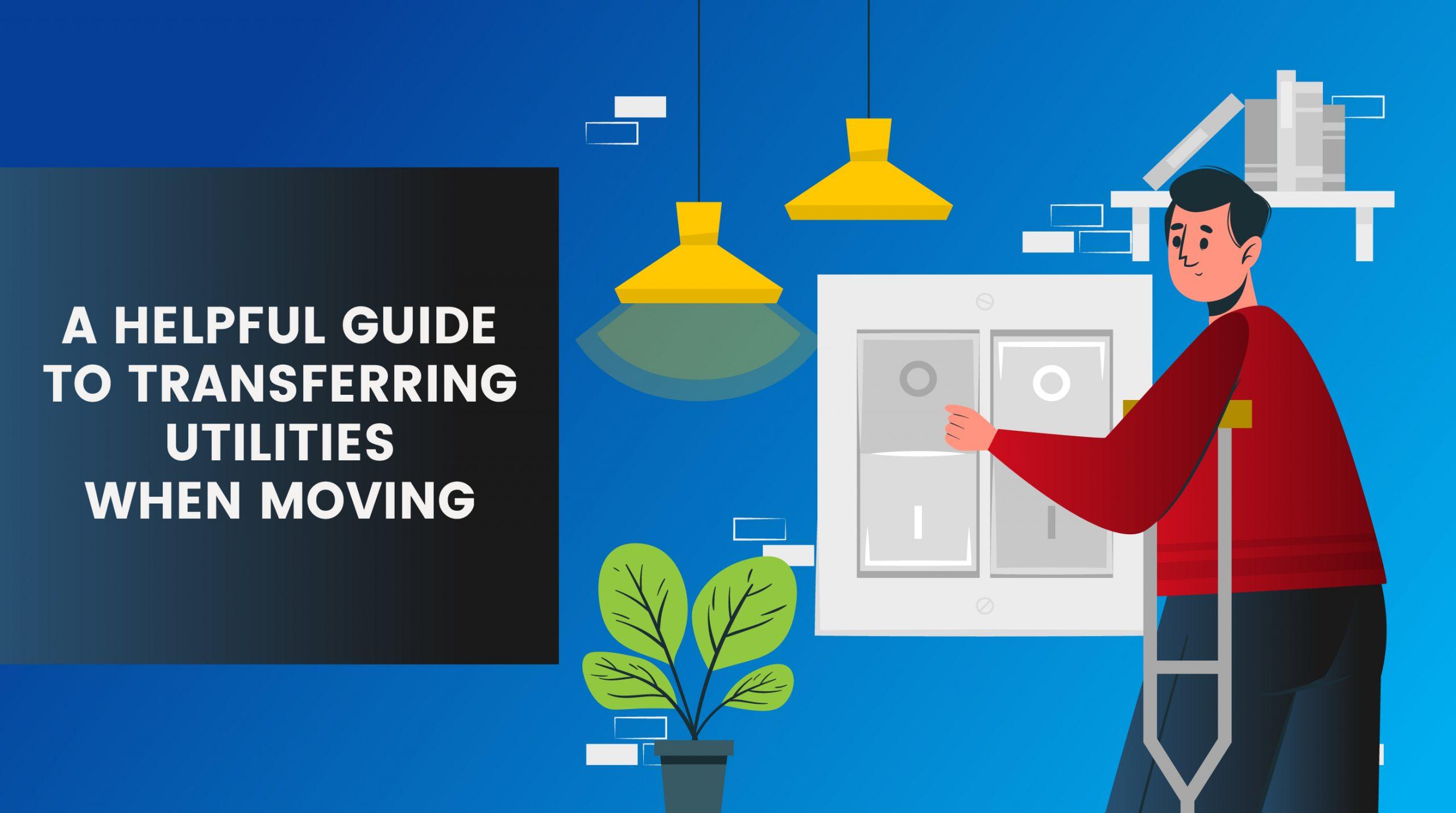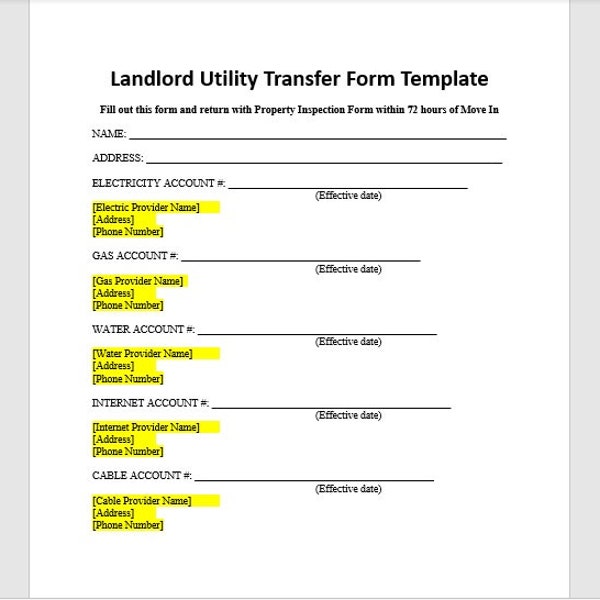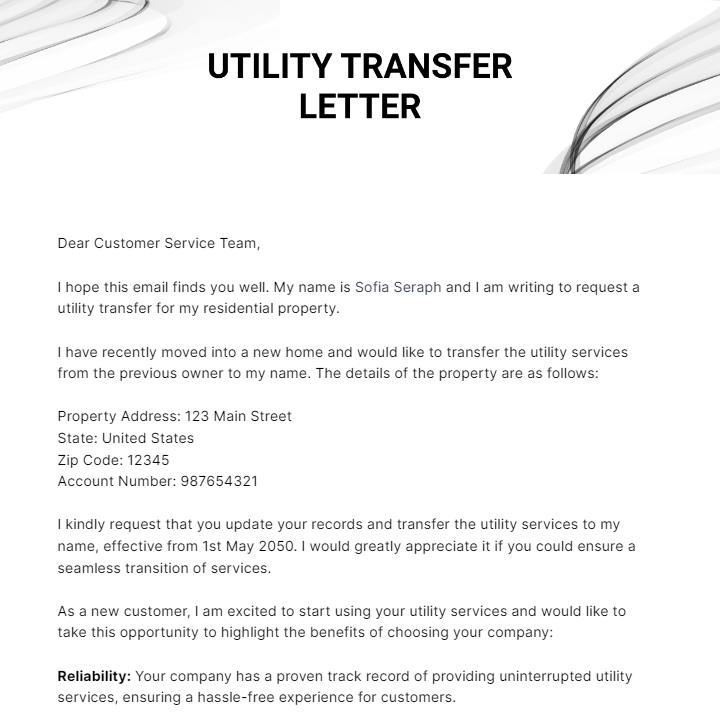How To Transfer Utilities From Seller To Buyer

Navigating the transfer of utilities during a real estate transaction can feel like a daunting task amidst the already complex process of buying or selling a home. However, understanding the steps involved in transferring utilities like electricity, water, gas, and internet is crucial for a smooth transition and to avoid unexpected service disruptions or charges.
This article provides a comprehensive guide on how to transfer utilities from seller to buyer, ensuring a seamless handover of services and minimizing potential headaches for all parties involved.
The Nut Graf: A Step-by-Step Guide
The utility transfer process involves several key steps: notification, account closure (for the seller), account creation (for the buyer), meter readings, and confirmation. Successfully navigating each of these steps requires careful planning and coordination between the seller, the buyer, and the utility companies.
Seller's Responsibilities: Closing Accounts
The seller's primary responsibility is to notify their utility providers of their upcoming move-out date. This notification is typically required at least two weeks in advance to allow the utility companies sufficient time to schedule a final meter reading and close the account.
Sellers should gather their account numbers for each utility (electricity, water, gas, internet, etc.) to expedite the notification process. Most utility companies offer online portals or phone lines specifically for move-out requests.
It’s important to record the date and time of the final meter reading to ensure accurate billing and prevent any disputes over usage after the move-out date. Document everything!
Buyer's Responsibilities: Setting Up New Accounts
The buyer is responsible for establishing new accounts with the utility providers before the closing date. This ensures that services are active and ready upon move-in.
Buyers should research the utility providers serving the property and compare rates and services. Many areas offer choices for electricity and internet providers, while water and gas are often managed by local municipalities.
To establish a new account, buyers will typically need to provide their name, address, social security number (or other identification), and the move-in date. A deposit may also be required, depending on the utility company's policies and the buyer's credit history.
Contacting the utility companies at least two weeks before closing is advisable. Some companies may require in-person visits or scheduled appointments for service connection.
The Importance of Communication
Open communication between the seller and the buyer is essential for a smooth utility transfer. Sharing information such as the names of current utility providers and account numbers can greatly simplify the process.
Consider including a clause in the purchase agreement that outlines the responsibilities of both parties regarding utility transfers. This helps to avoid misunderstandings and ensures that everyone is on the same page.
A final walk-through of the property before closing provides an opportunity for the buyer to confirm that all utilities are functioning as expected and that there are no outstanding issues.
Potential Pitfalls and How to Avoid Them
One common pitfall is failing to notify the utility companies in a timely manner, leading to service disruptions or incorrect billing. To avoid this, mark your calendar with key dates and deadlines for utility transfers.
Another potential issue is overlapping service periods, where both the seller and the buyer are charged for the same utility usage. Accurate meter readings and timely account closures can prevent this.
Unexpected delays in closing can also complicate the utility transfer process. Be prepared to adjust your plans if the closing date is postponed, and communicate any changes to the utility companies as soon as possible.
Human Interest: Helping Seniors Navigate the Process
For elderly individuals or those with limited mobility, the utility transfer process can be particularly challenging. Real estate agents, family members, or professional organizers can provide valuable assistance in coordinating the necessary steps.
Many utility companies offer specialized services for seniors, such as simplified billing options and assistance with setting up accounts. Reach out to utility providers to see if they have programs to help. Taking the extra time to help can greatly ease the burden on senior citizens during this transition.
The Role of Real Estate Professionals
Real estate agents often play a key role in guiding their clients through the utility transfer process. They can provide checklists, contact information for local utility providers, and advice on navigating potential challenges.
Experienced real estate professionals understand the importance of a seamless utility transfer and can help to ensure that all parties involved meet their responsibilities.
Choosing a knowledgeable and proactive real estate agent can significantly reduce the stress and complexity of buying or selling a home.
Conclusion: A Smooth Transition
Transferring utilities during a real estate transaction requires careful planning, clear communication, and timely action. By understanding the responsibilities of both the seller and the buyer and by working closely with utility companies and real estate professionals, a smooth and seamless transition can be achieved.
Taking the time to properly manage the utility transfer process can save time, money, and unnecessary stress, allowing both the seller and the buyer to focus on the excitement of their next chapter.


















